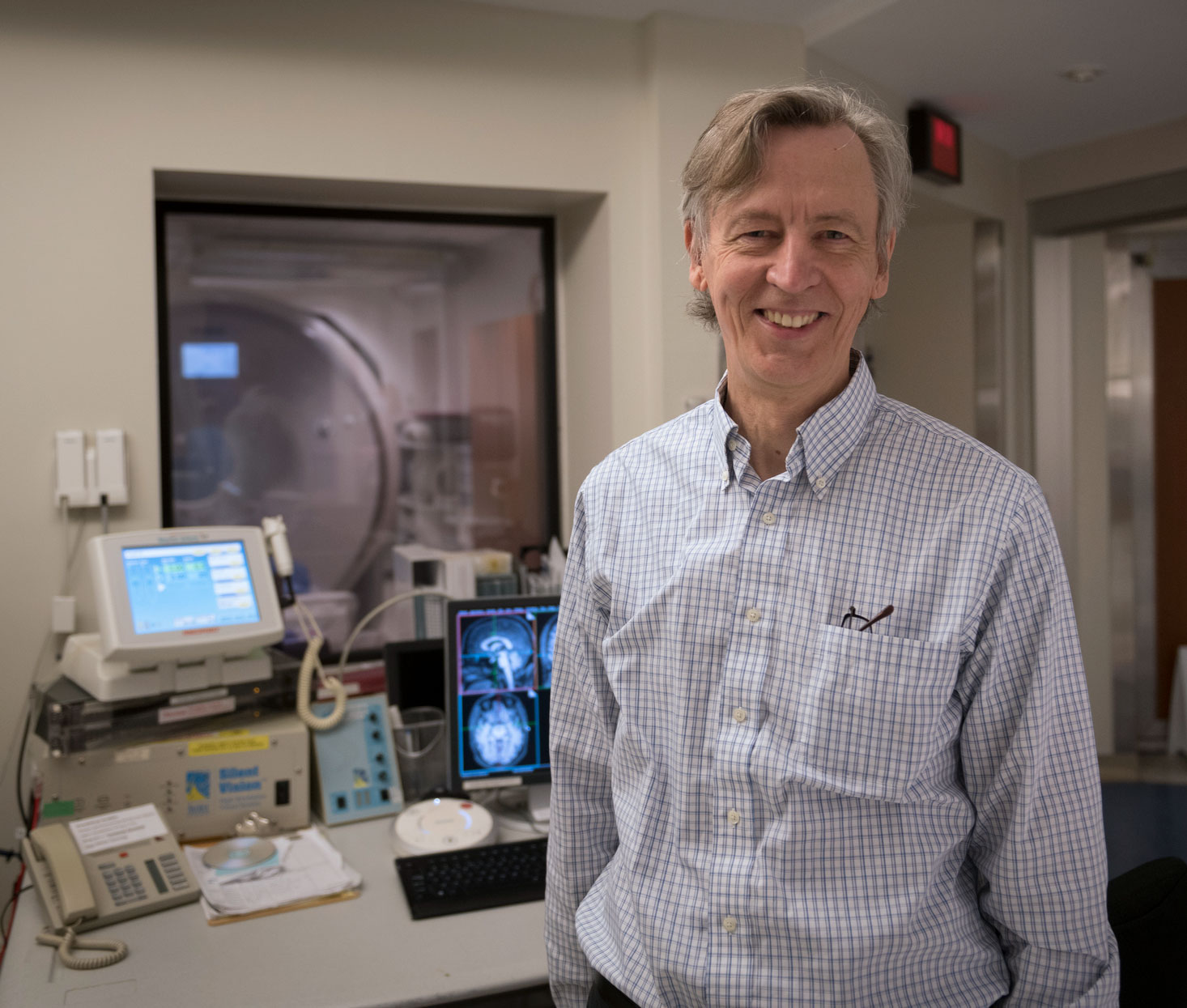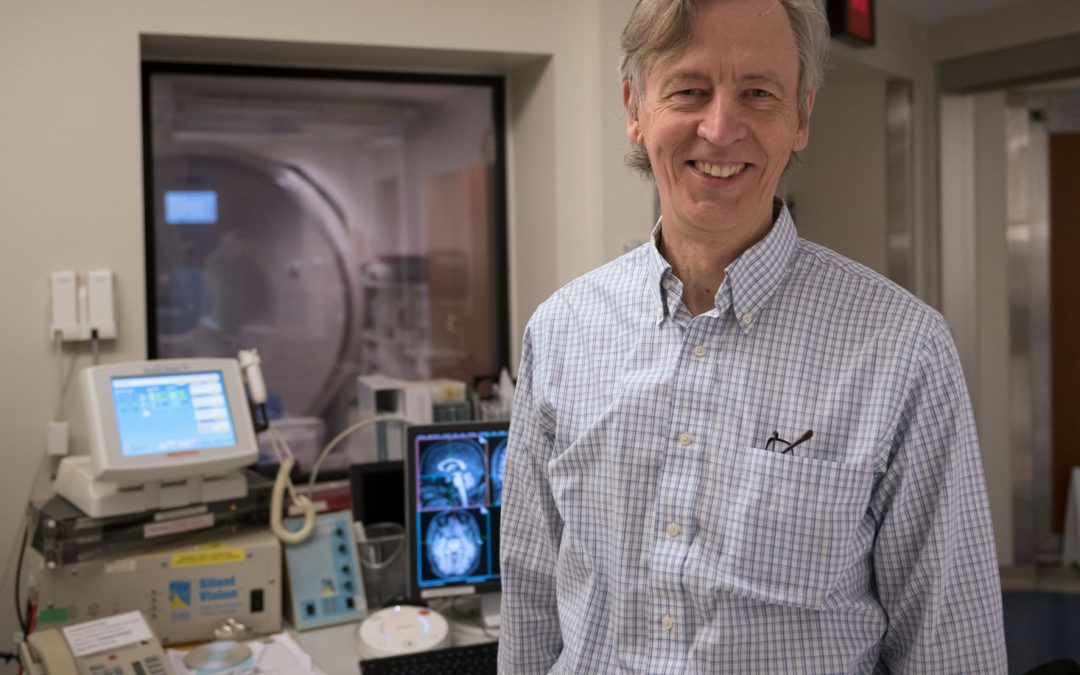
Dr. Kullervo Hynynen is photographed at Sunnybrook Health Sciences Centre in Toronto, Ontario February 26, 2021. Photo by Kevin Van Paassen/Sunnybrook.
Dr. Kullervo Hynynen is Vice President of Research and Innovation at Sunnybrook Health Sciences Centre and a Senior Scientist at Sunnybrook Research Institute’s Odette Cancer Research Program. He is also a Professor in the Department of Medical Biophysics and the Institute of Biomedical Engineering at the Temerty Faculty of Medicine at the University of Toronto. With the overall goal of using technology to improve healthcare, his research interests centre on using focused ultrasound beams on tissue, with a particular focus in its application for the development of noninvasive therapy interventions.
Focused ultrasound can provide highly localized and controllable energy deposition deep in the tissue when it is guided by noninvasive imaging such as magnetic resonance imaging (MRI). This high frequency pressure wave can be used to probe tissue properties and functions for diagnostic purposes or to modify tissue to provide treatment. The rapid and focal energy delivery can induce tissue temperature elevation such that the target is coagulated within a few seconds without damage to the overlying or surrounding tissues. Similarly, by modifying the pressure wave, various biological effects can be induced, including the blockage or closing of blood vessels, the disintegration of blood clots, and the increase of blood vessel wall and cell membrane permeability to enhance drug delivery. Ultrasound can also be used to locally enhance the effectiveness of other therapies, such as radiation and chemotherapy, and release or activate therapeutics, thus minimizing the systemic impact of the treatment. Finally, ultrasound can be used for local and deep neuromodulation that may provide new therapeutic opportunities.
Dr. Hynynen has developed several ultrasound systems and methods that have been commercialized and have regulatory approval and others that are being tested clinically. His research discoveries on ultrasound transducers have been used to design and develop new phased array applicators and better ways to deliver therapy, and he pioneered the use of MRI to detect and quantify noninvasive ultrasound exposure in vivo. Additionally, he has developed theoretical models to help understand treatment parameters and to allow optimization of treatment devices, He has conducted in vivo experiments to investigate the various biological end points that can be induced by controlling the sonication parameters with the goal of developing new therapies.

